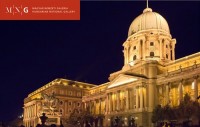The figure of Heracles fighting with the Lernean Hydra is frequently depicted on World War I medals, since it suggests the ethical content of the battles most clearly. In accordance with the aims of propaganda, later depictions were increasingly symbolic, giving little space to presenting the struggle artistically. Zutt, who had Swiss roots and taught at the College of Arts and Design in Budapest between 1912 and 1925, created the medal at the beginning of the war. It depicts the figures in a perceptibly close physical struggle, emphasising its heroic character. Heracles’s muscles stretch almost to breaking point and his adversary’s writhing, sticky tentacles have visibly not yet given up the fight. The entanglement of the bodies is made almost palpable by their three dimensional quality, which was still unusual in the medallic art of the era. The hydra in such an octopus-like form probably became represented in the repertory of artists from the episodes of Victor Hugo’s The Toilers of the Sea (1866) and Jules Verne’s Captain Nemo (1869).
en

